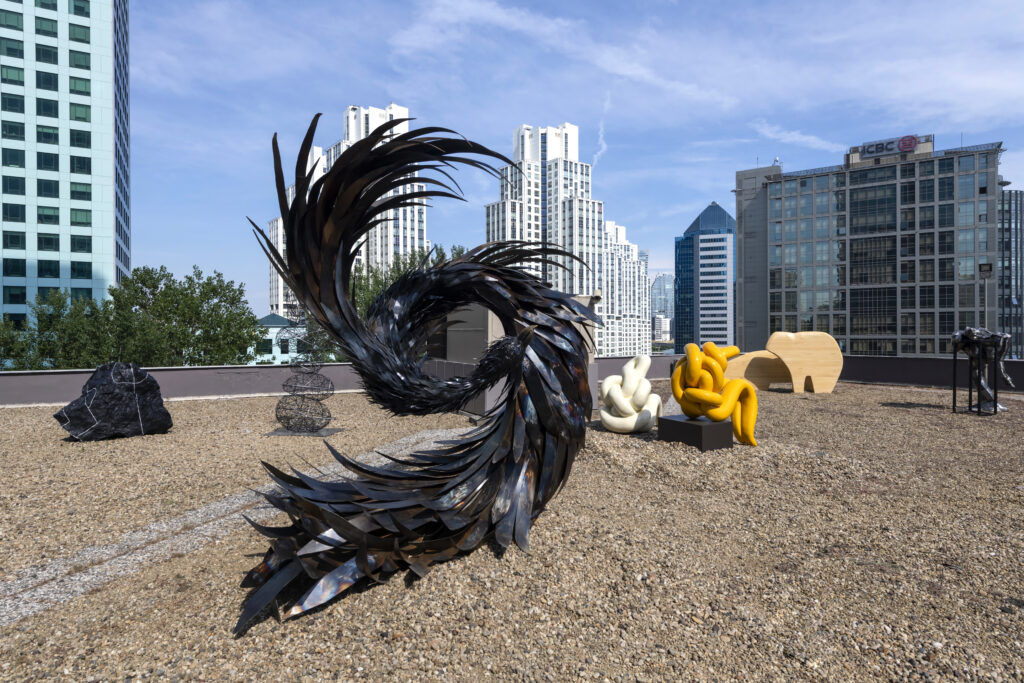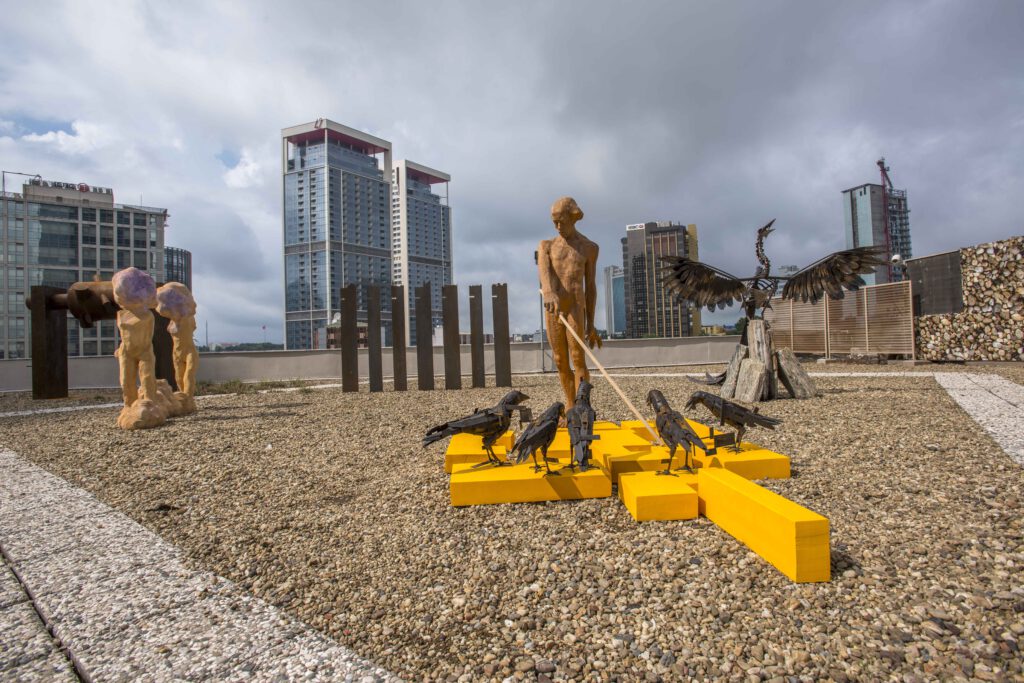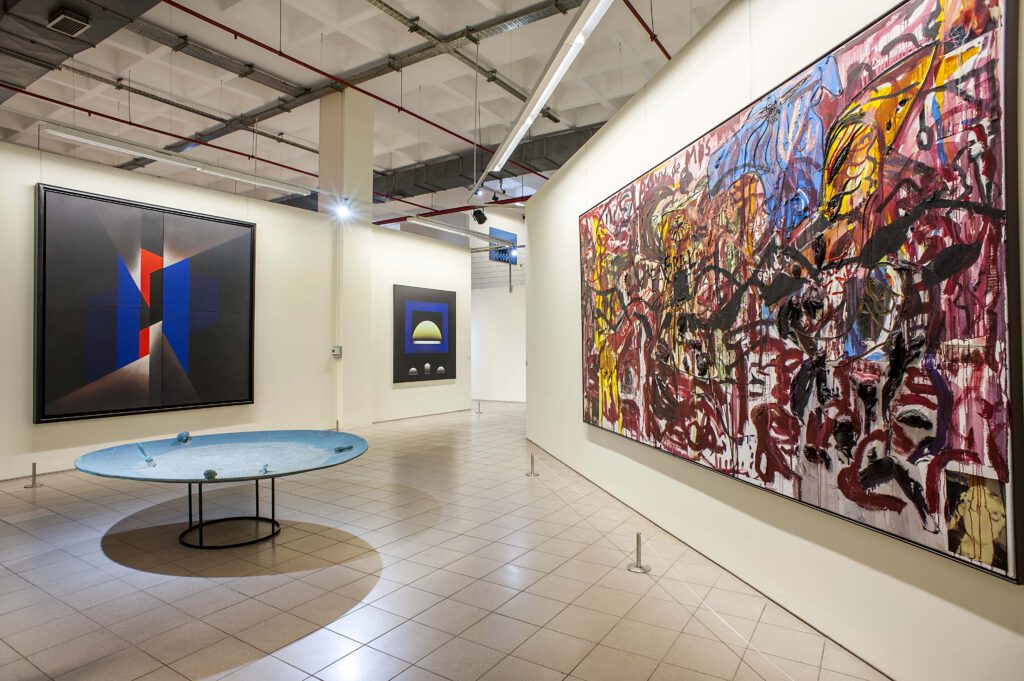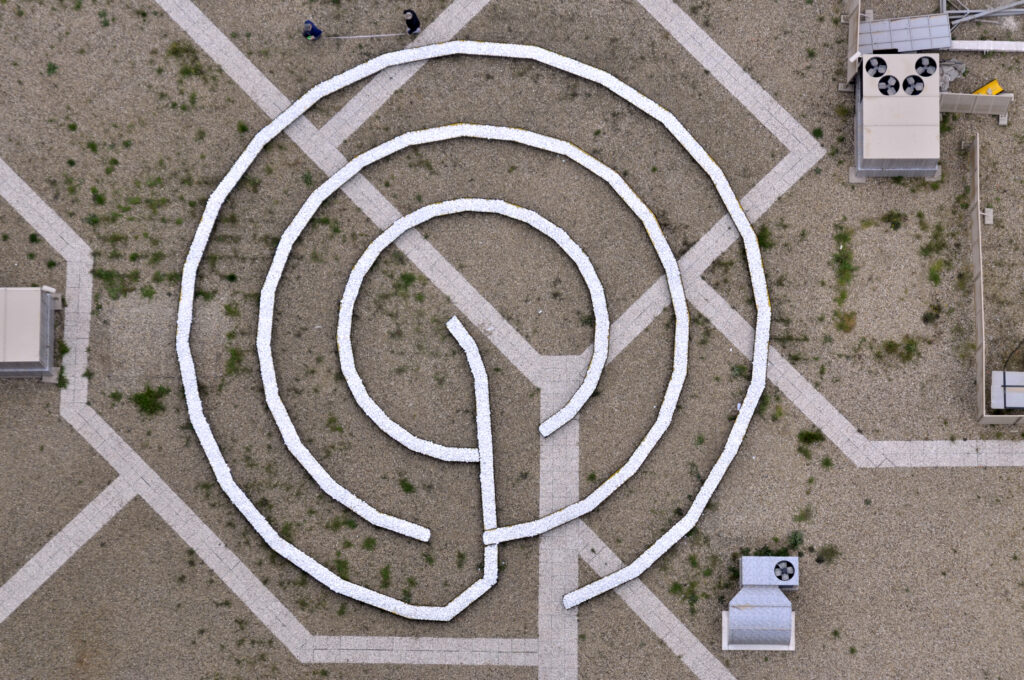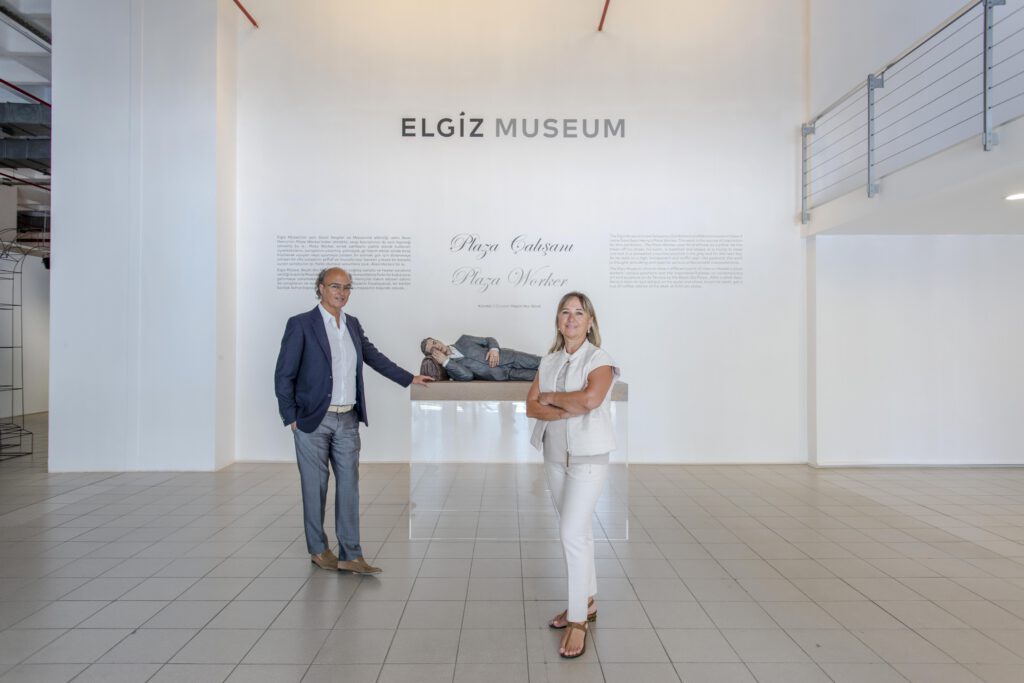„Der beste Weg, Künstler:innen zu unterstützen, ist, sie sichtbar zu machen!“
Collectors Interview | Sevda und Can Elgiz
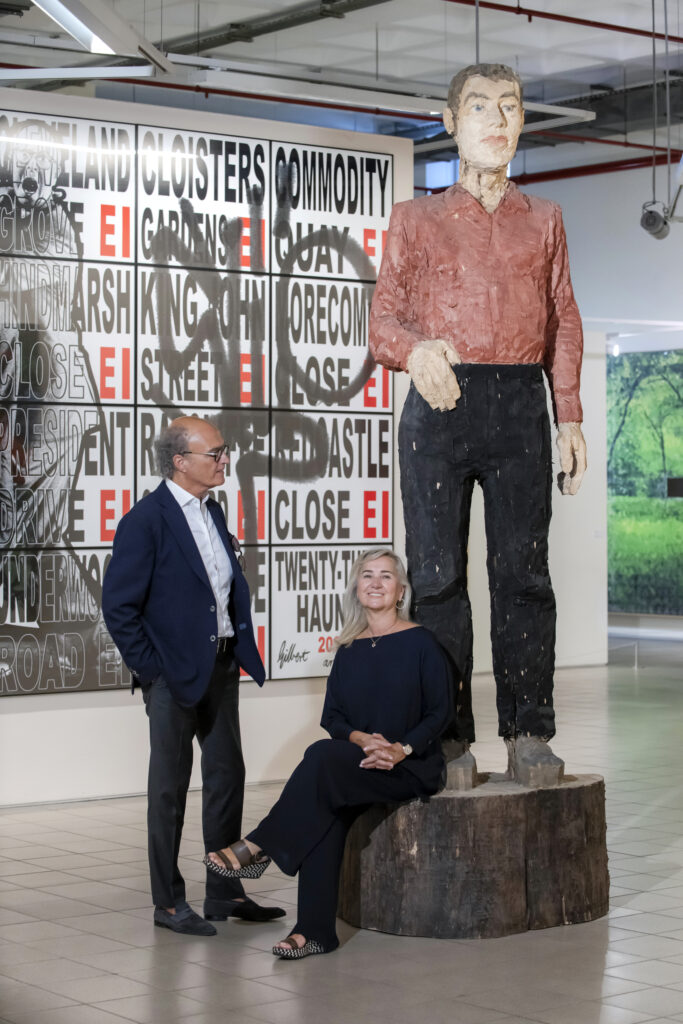
Lernen Sie Sevda und Can Elgiz kennen, ein Sammler:innenpaar mit sozialem Gewissen! Die ersten Sammler:innen der Türkei, die in Istanbul einen öffentlichen Raum für zeitgenössische Kunst eröffnet haben – das Elgiz Museum – präsentieren ständig wechselnde Ausstellungen ihrer umfangreichen Sammlung und initiieren regelmäßig Projekte zur Unterstützung der jungen lokalen Kunstszene. viennacontemporaryMag sprach mit ihnen über ihre Sammelleidenschaft, die damit verbundene Verantwortung und ihr Projekt, das heilende Aspekte der Kunst nutzen will, um den Opfern des verheerenden Erdbebens in der Türkei zu helfen.
Welche Bedeutung hat Kunst in Ihrem Leben?
Sevda: Kunst ist ein Weg, die Seele zu beflügeln, und sie verbindet uns mit der ganzen Welt! Letzte Woche waren wir in London bei einem Wohltätigkeitsabend für ukrainische Künstler:innen in der Royal Academy, und zur Unterstützung haben wir ein Werk gekauft. Wir waren alle wegen derselben Sache dort, das hat uns verbunden.
Can: Für uns ist Kunst mehr als eine Investition, sondern vielmehr eine Leidenschaft, ein Lebensstil und eine soziale Einstellung.
Sevda: Es ist eine Möglichkeit, Freund:innen außerhalb der Heimat zu finden. Ich erinnere mich an Marino Golinelli, einen sehr wichtigen italienischen Sammler, der inzwischen leider verstorben ist. Als er und seine Frau Paola zum ersten Mal nach Istanbul kamen und unsere Sammlung besuchten, hatten wir ein Werk von Peter Halley beim Eingang. Später erzählte mir Marino, dass er, als er dieses Werk sah, von dem er ein ähnliches besaß, zu seiner Frau sagte: “Mit diesem Paar werden wir sicher gute Freunde werden“ – was dann auch eintraf.
Can: Auf Messen sieht man so viele Künstler:innen und Galerien an einem Ort, hat viele parallele Aktivitäten, und lernt neue Sammler:innen kennen, und das ist immer eine Ermutigung. Das Beste aber ist es, die privaten Sammlungen zu sehen. Es gibt so viele ähnliche und unterschiedliche Geschmäcker, das ist immer inspirierend. Wenn man in den Privatsammlungen etwas entdeckt, das einem gefällt, kann man auf der Messe nach demselben Künstler:innen oder Stil suchen.
Sevda: Wir waren jetzt auf der Arco und haben uns schon alle gegenseitig geschrieben: „Bist du da?“ –“Ja, ich komme!“. Wir sind Mitglieder des Internationalen Sammlungskomitees, in dem wir und andere Sammler:innen die Künstler:innen für die Sammlung der Arco-Stiftung auswählen können. Vor zehn Jahren wurden wir auch mit dem Arco Collectors Award ausgezeichnet, daher hat diese Messe einen besonderen Platz in unseren Herzen.
When you two started collecting, hardly anyone went to the art fairs and there was also no museum for contemporary art in Turkey.
Can: You are right, we were one of the very first Turkish art lovers of contemporary art going to fairs, and then later opening a public space for contemporary art. There were many collectors in Turkey, but they were only collecting classical oriental paintings and artists. Contemporary art was long after hardly noticed by anyone.
Did people think you were crazy for collecting contemporary art?
Sevda: At the beginning, I also thought he was nuts. Then, I said to myself: maybe, because he is an architect, he is very visionary; and as a good wife I accompanied him in his interests. When we started collecting contemporary art together, even close friends of ours asked us why we were spending our money on such things. Especially when it came to video art. But now, those who criticized us most have become outstanding collectors. They see that Can Elgiz is a good businessman, so they assume that whatever he does must be good.
So you are trendsetters!
Sevda: Art is not the only passion of my husband; he also adores music. We have a huge, very particular music system at home. People book appointments to come with their cables and vinyl. And thirdly, he is very passionate about supercars. He used to have a collection of Ferraris, Lamborghinis, and many more.
Can: But art is the biggest passion of them all.
Sevda: People say when a husband retires, he becomes a problem at home because he has nothing to do. Not Can, he is so busy with his hobbies. In the beginning, we used to go to important fairs like Art Basel, Arco Madrid, and many more. But now, there are so many fairs that we have stopped going around to visit all of them. Oftentimes, we used to get so confused about what we wanted to buy because we got overwhelmed by the sheer amount of new choices. So today, we follow our favorite galleries and our favorite fairs.
So how does one know what to buy in such an overwhelming art world?
Can: To be a collector, first you must study. You need to collect books and follow up on the internet and other sources to improve your knowledge and be up to date about the recent trends and interests of contemporary art. We also collect a lot of books. All night long you must study – as a pleasure of course, not a duty.
Do you follow a specific focus?
Sevda: We started with Turkish artists. Abdurrahman Öztoprak was the first artist we collected, as well as Dennis Gün, who was an internationally recognized Turkish-Austrian artist, so they have a special place in our hearts. Peter Halley and David Salle joined our international collection later.
Can: We don’t have a specific focus. We buy what we can afford and what we like. I believe that as you widen your collection you can always make great exhibitions from a selection; it’s not necessary to collect all the different stages of the same artist for example.
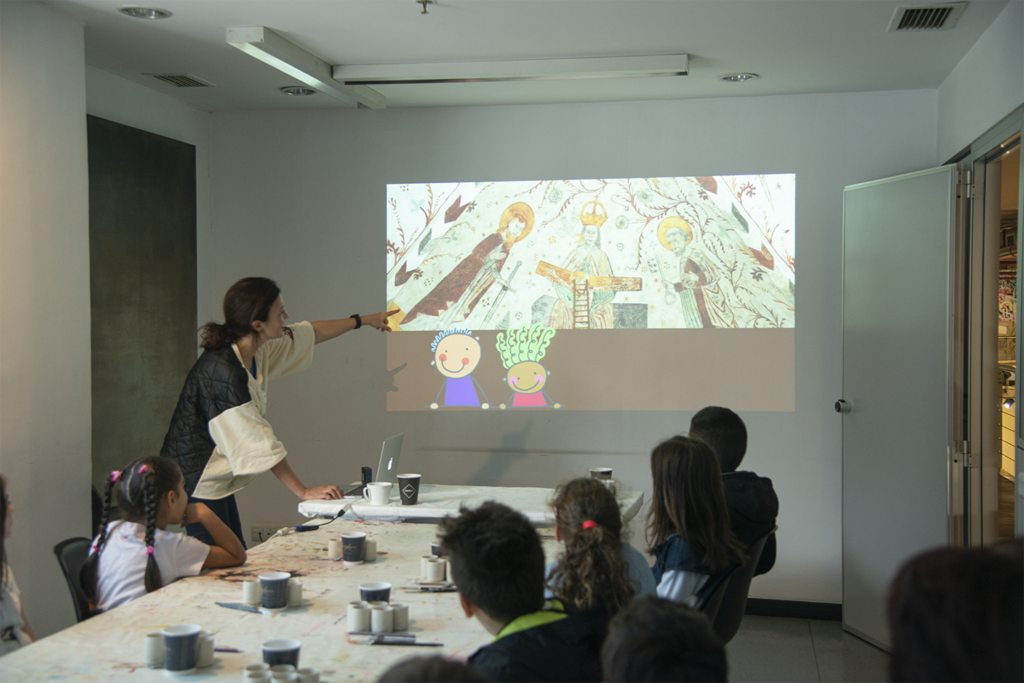
A workshop in partnership with Danish Culture Institute about Turkish and Danish culture by making natural paint
Please tell us about your exhibitions at the Elgiz Museum.
Can: First, we opened the space for young and unknown, under-established artists who could not find spaces to show their works. Galleries want to show established artists aiming at selling, otherwise, it makes no sense for them. This kind of nonprofit space was our aim in the beginning, and many of the artists we showed continued making art and are very well-known today. If we put an undiscovered Turkish next to Cindy Sherman, people automatically have a higher appreciation of it.
Sevda: We like to live with art at home and every piece has lived with us in the family home before moving to the shows. It’s an eclectic collection where you have photography, sculptures, videos, and paintings. When curators re-arrange them, it’s always exciting to see a new appeal and meaning they get. We often invite artists to make performances and installations. We exchange collections with other collectors in their spaces or they come to our space. We do programs for children, they come with their teachers, or we provide guides to teach and inspire them.
Can: Our spaces are open to the public, so we invite people to discover contemporary to create new collectors. We both think the best way to support artists and art is to make them visible. If you keep the works only at home, the number of people that see them is very limited.
You are known for supporting young, local artists. Any cause that is especially close to your heart?
Can: We love all contemporary art that we bought, so we want to support all of the artists behind it.
Sevda: We have a few works by Nilbar Güres, we appreciate her work, and we will support her art. We want to reach those who really need our experience. We also help Turkish artists to go to fairs to be on the international stage in the name of Turkey. Currently, we are focusing on helping sculptors.
Can: We have a big open-air terrace of 2.000m2 with space for young sculptors. Every year, our selection jury chooses 30 to 40 sculptures to exhibit, depending on the size. The number of applications increases every year; this year we have about 200 applications.
Sevda: Our collector friends mostly buy these new artists for their houses and gardens. So, we open the way into the sculpture collections of our friends. Also, children come with educators to explore the sculptures. Projects like this give us pleasure and serve to educate people about contemporary art.
What about the Turkish art scene, how is it going?
Can: Twenty years ago, nobody was collecting international art but recently, the Istanbul contemporary art fair has been improving year by year, and the number of collectors, who then also become interested in international art, is increasing. Because to become interested, you need to first be exposed to it, to see it with your own eyes.
Sevda: Nowadays, we have two or three young fairs that bring young artists into the market after university, so these are important for discovering new artists and supporting them by allowing them to sell their art. There are extremely talented and nice young artists, but they need support to get on the international market, otherwise, they will rest on a local level.
It seems as if you as private collectors fulfill a lot of the tasks that are usually covered by the government or institutions.
Sevda: We try to do our best. With great pleasure comes great responsibility. The population in Istanbul is very diverse, as is the city itself. We represent the laic and modern part of the country and we will never stop to support contemporary art, music, and artistic education, for children, students, and young generations…– everything that will take us towards the Occident – without losing the fascination of the Orient and our history.
Currently you are working on a program to aid the victims of the earthquake. Can you tell us about it?
Sevda: After the horrible earthquakes in Turkey, we started a project where we send volunteers – young Turkish artists and students – to the affected regions where people now live in tents, to make art with children for their rehabilitation.
Can: The children are very traumatized. This art project is supposed to take their mind off the harsh reality! Because art is healing, it opens our souls!
Project to aid the victims of the earthquake
„We are deeply saddened by the devastating earthquake that occurred in the east of our country. Thousands of citizens have lost their lives and millions have lost their living space. At the Elgiz Museum, we will help the children who have had to leave their homes and stay in tents for long periods of time. We will invite young artists and art students to workshops with painting, sculpture, and songs to help them rehabilitate and distract them at least a little. We believe in the healing power of art. Many friends of the museum and collectors support our project financially, and we are very motivated to extend our help by receiving support.
Anyone who wants to show solidarity can contactinfo@elgizmuseumistanbul.org for details on how to donate and the account number.“
– Sevda and Can Elgiz

